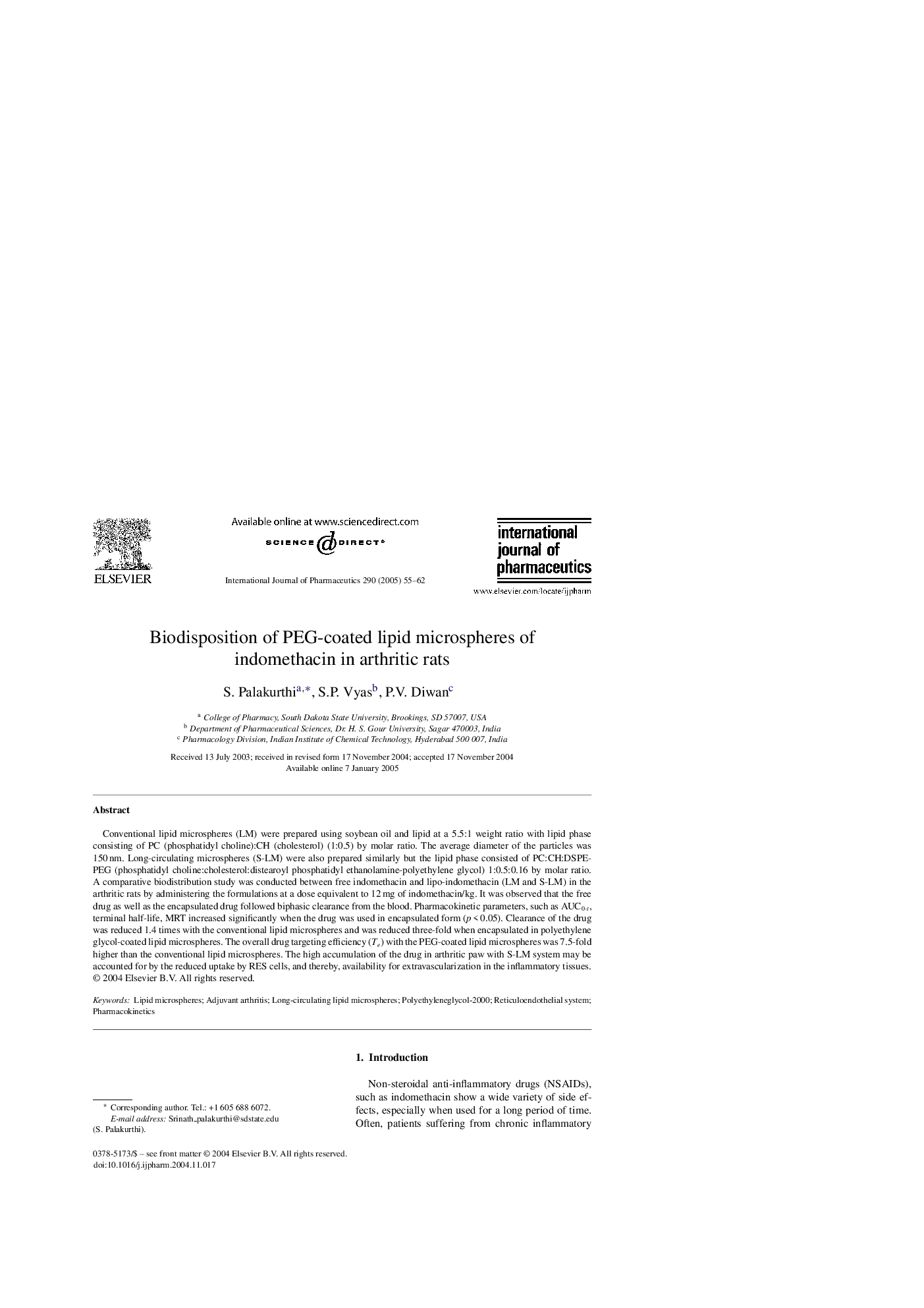| Article ID | Journal | Published Year | Pages | File Type |
|---|---|---|---|---|
| 9918952 | International Journal of Pharmaceutics | 2005 | 8 Pages |
Abstract
Conventional lipid microspheres (LM) were prepared using soybean oil and lipid at a 5.5:1 weight ratio with lipid phase consisting of PC (phosphatidyl choline):CH (cholesterol) (1:0.5) by molar ratio. The average diameter of the particles was 150 nm. Long-circulating microspheres (S-LM) were also prepared similarly but the lipid phase consisted of PC:CH:DSPE-PEG (phosphatidyl choline:cholesterol:distearoyl phosphatidyl ethanolamine-polyethylene glycol) 1:0.5:0.16 by molar ratio. A comparative biodistribution study was conducted between free indomethacin and lipo-indomethacin (LM and S-LM) in the arthritic rats by administering the formulations at a dose equivalent to 12 mg of indomethacin/kg. It was observed that the free drug as well as the encapsulated drug followed biphasic clearance from the blood. Pharmacokinetic parameters, such as AUC0-t, terminal half-life, MRT increased significantly when the drug was used in encapsulated form (p < 0.05). Clearance of the drug was reduced 1.4 times with the conventional lipid microspheres and was reduced three-fold when encapsulated in polyethylene glycol-coated lipid microspheres. The overall drug targeting efficiency (Te) with the PEG-coated lipid microspheres was 7.5-fold higher than the conventional lipid microspheres. The high accumulation of the drug in arthritic paw with S-LM system may be accounted for by the reduced uptake by RES cells, and thereby, availability for extravascularization in the inflammatory tissues.
Related Topics
Health Sciences
Pharmacology, Toxicology and Pharmaceutical Science
Pharmaceutical Science
Authors
S. Palakurthi, S.P. Vyas, P.V. Diwan,
